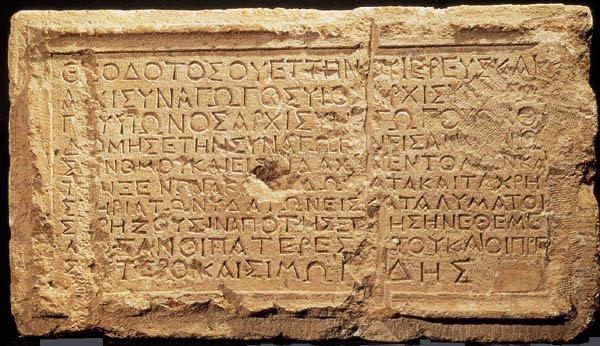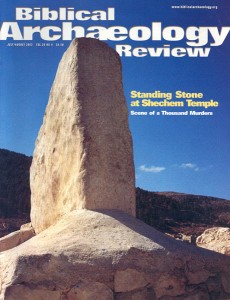The Theodotus Inscription
Sidebar to: Israel Antiquities Authority Declines Dirty Money

Hundreds of synagogues stood in ancient Jerusalem before their destruction by Titus’s Roman forces in 70 A.D.; in one of them hung the following Greek inscription, carved prominently into the 25-by-17-inch limestone slab shown above: “Theodotus son of Vettenus, priest and synagogue leader, son of a synagogue leader, grandson of a synagogue leader, rebuilt this synagogue for the reading of the Law and the teaching of the commandments, and the hostelry, rooms and baths, for the lodging of those who have need from abroad. It was established by his forefathers, the elders and Simonides.” The fact that the language of the inscription is Greek, not Hebrew, and its allusion to “those who have need from abroad,” suggest that this synagogue was used by Jews from the Diaspora, and that it housed large numbers of visiting pilgrims. Some scholars have identified it with the Synagogue of the Freedmen (former slaves in the Roman Empire), mentioned in Acts 6:9.
Already a library member? Log in here.
Institution user? Log in with your IP address.

